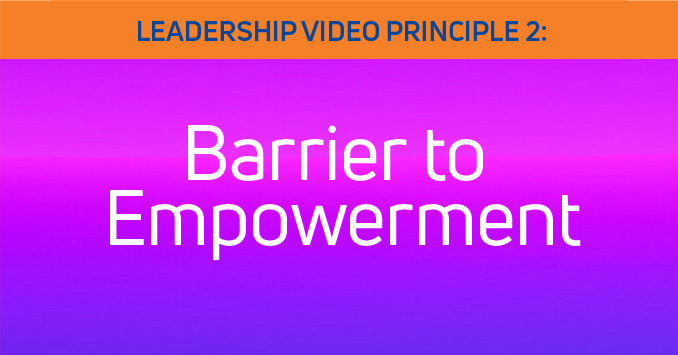Leadership Videos
 Behind every AUTHENTIC leader is an alternate self called EGO.
Behind every AUTHENTIC leader is an alternate self called EGO.
It is that part of ourselves, which when unknown to us, unconsciously mis-directs and mis-informs our actions as leaders. It’s a part of us that is driven more by fear of maintaining control and looking good than it is in authentically relating.
Imagine a leader in the beginning, as a bright light beaming with enthusiasm and big ideas. Now imagine over time, (after rejections of ideas, bad quarter earnings, negative feedback, etc.) the leader’s light slowly being dimmed and covered up by a flame resistant dark cloth. The cloth represents the ego.
Reaching peak performance when a leader’s light is unconsciously being dimmed is like someone trying to witness the sunrise with their eyes closed. Ego mastery is the process of removing the “flame resistant cloth” so that a leader can once again access their innate brilliance and use it to perform at optimum levels.
The Ten Principles to Mastering the EGO for effective leadership:
Principle 1: Belief in Self
Just because you’re a leader doesn’t mean you’re impervious to bouts of self doubt or negativity. You’re human after-all. The key to high performance leadership is being able to discern which inner dialogue is running your behavior. Is your EGO’s fearful ramblings trying to keep you safe and in control or is your authentic leader calling the shots with self confidence?
Principle 2: Barrier to Empowerment
Authentic leaders are empowered leaders.They realize that what stops them from taking action are inner blocks not external ones. Identifying the inner “BE” (Barrier to Empowerment), allows leaders to break through the restrictive behaviors of the ego so they can lead with courage and conviction.
Principle 8: Leading through Listening
Listening is a critical leadership skill for communication and relationship building. It goes beyond being quiet, not interrupting or paraphrasing what someone said, to demonstrate that you gave your full attention. Listening infers understanding. To listen to understand, you must first know and understand yourself. Self-knowledge is the key to creating an enjoyable, productive work environment and communication free of judgment.
Free Culture Quiz
Losing Your Best Talent? Learn Why. Your leadership team may be unknowingly creating a culture of silence. Find out in 5 minutes with this Culture Quiz. No email required, and it’s Free.










